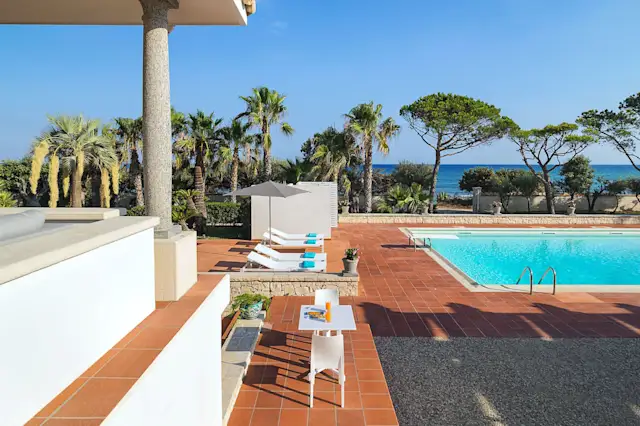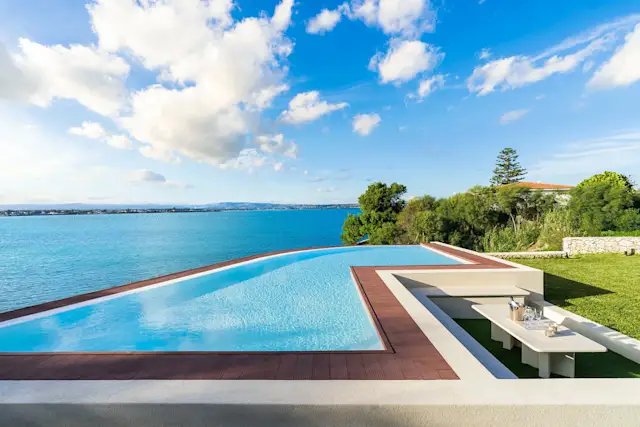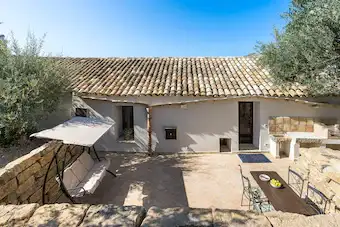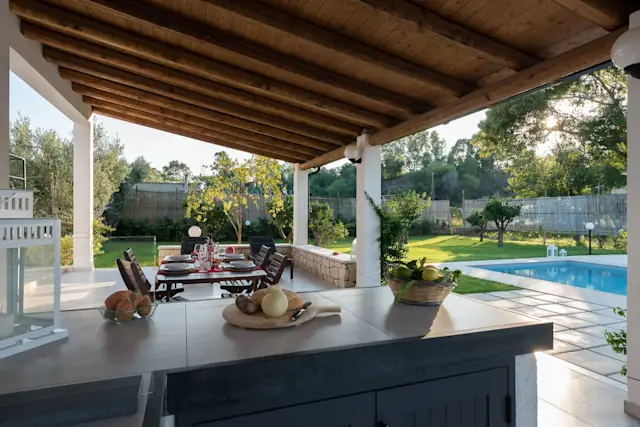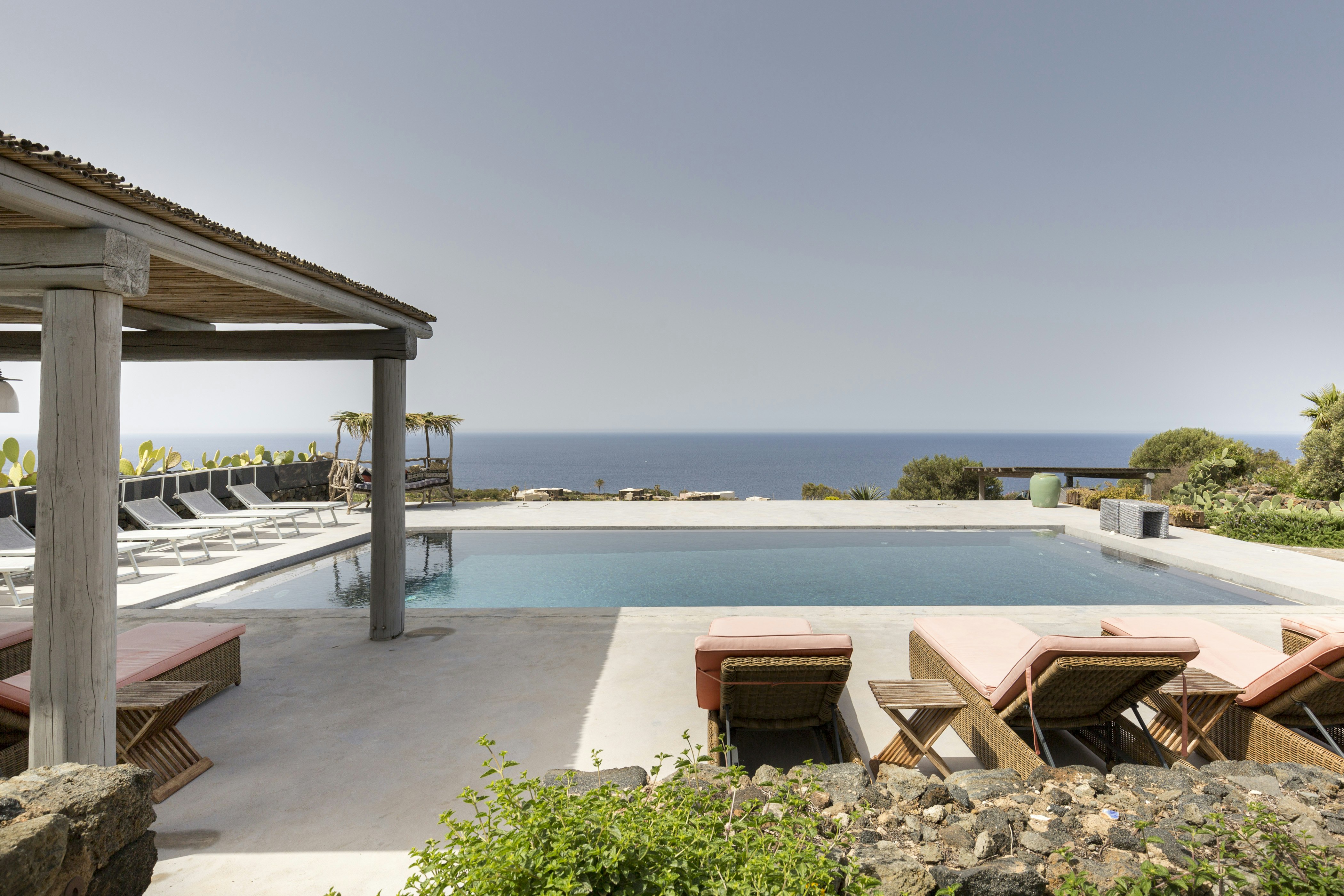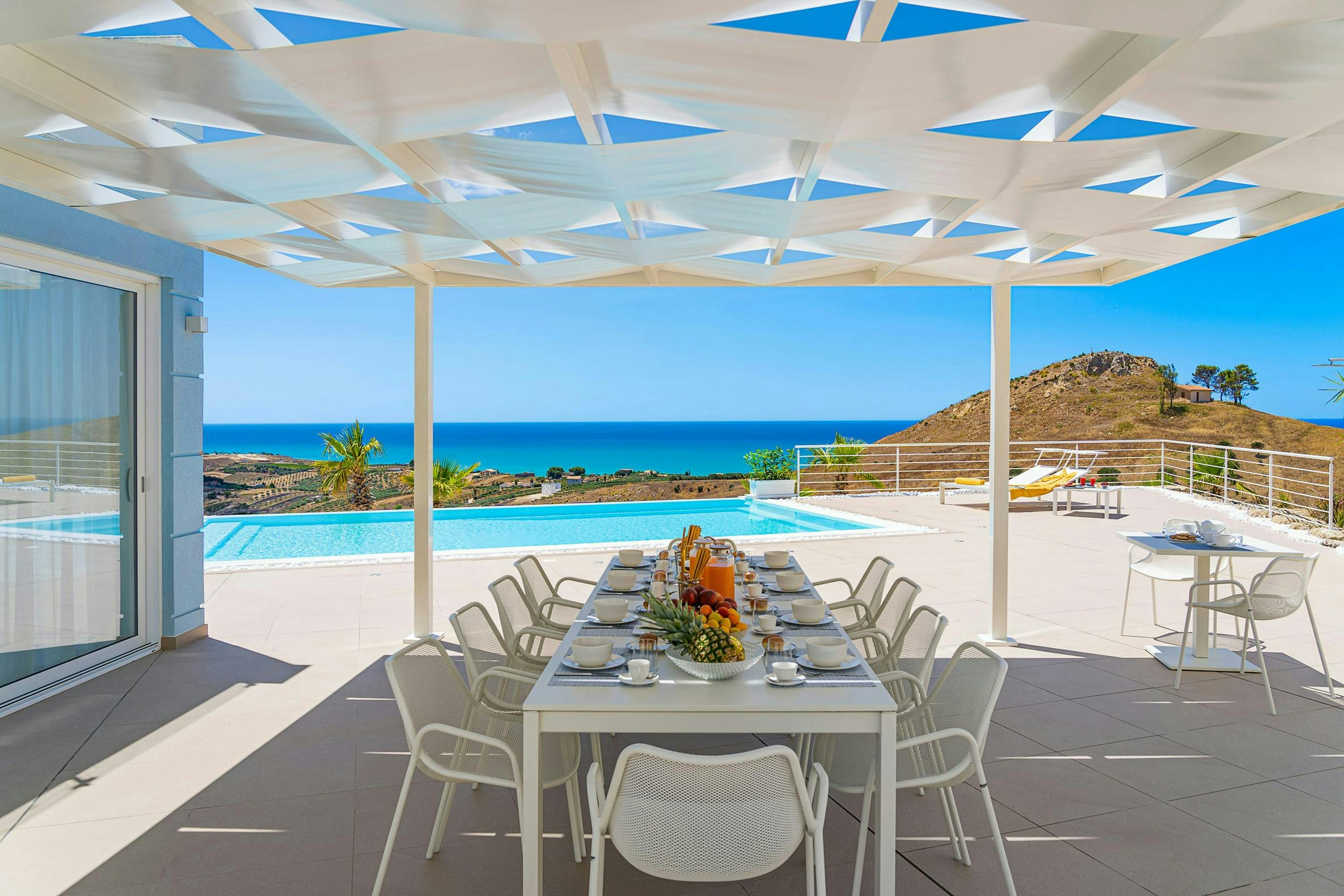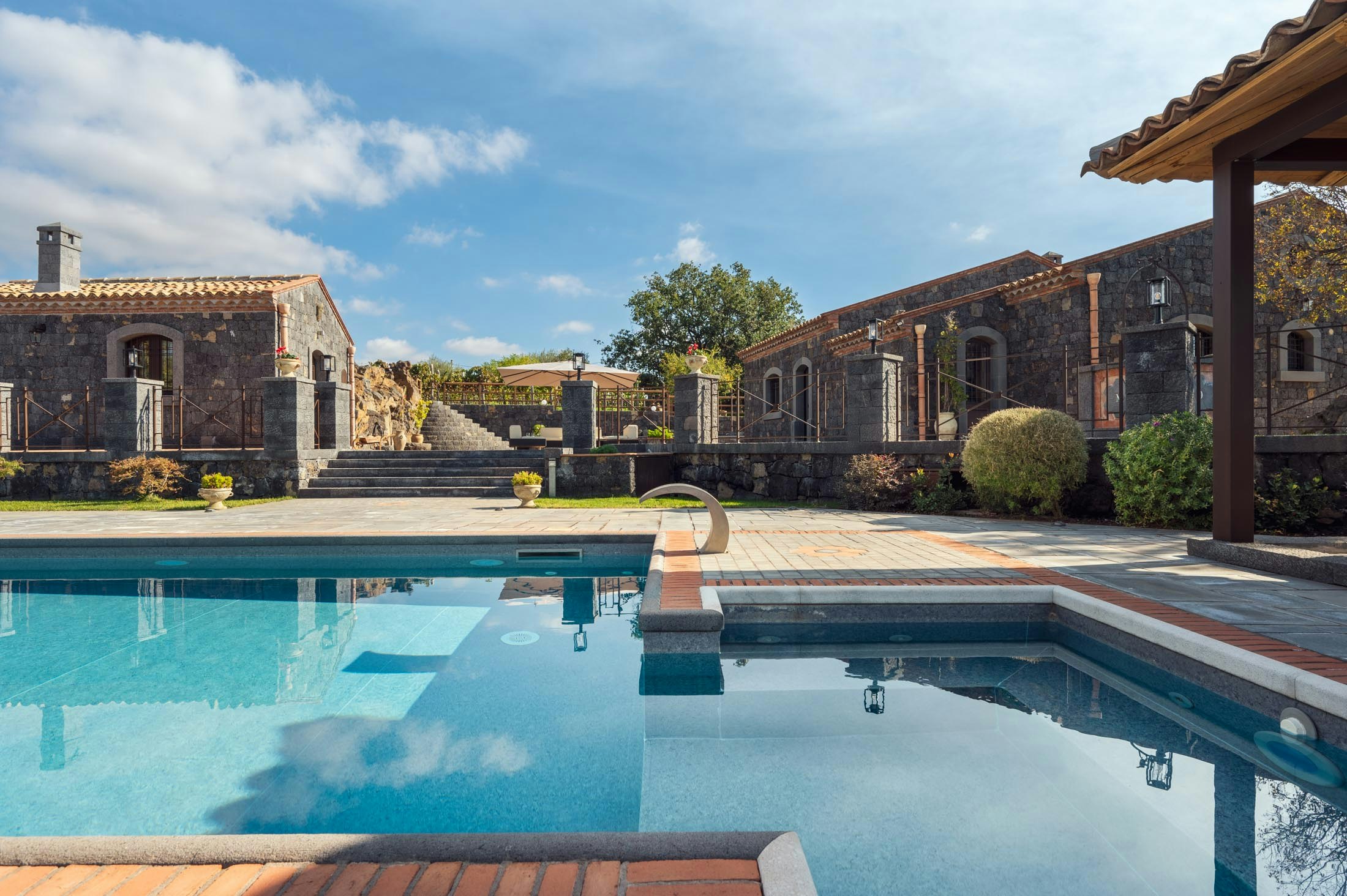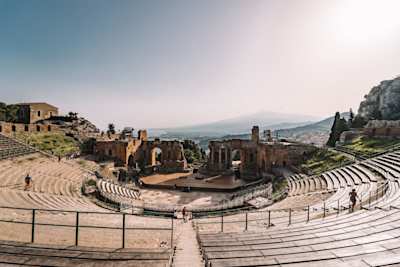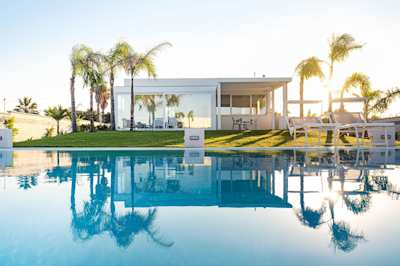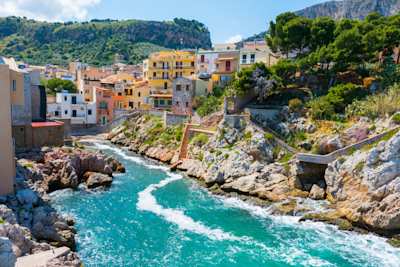The Perfect Two Week Sicily Itinerary
Sicily is Italy’s most beloved island and with good reason. Spend two weeks discovering why
~
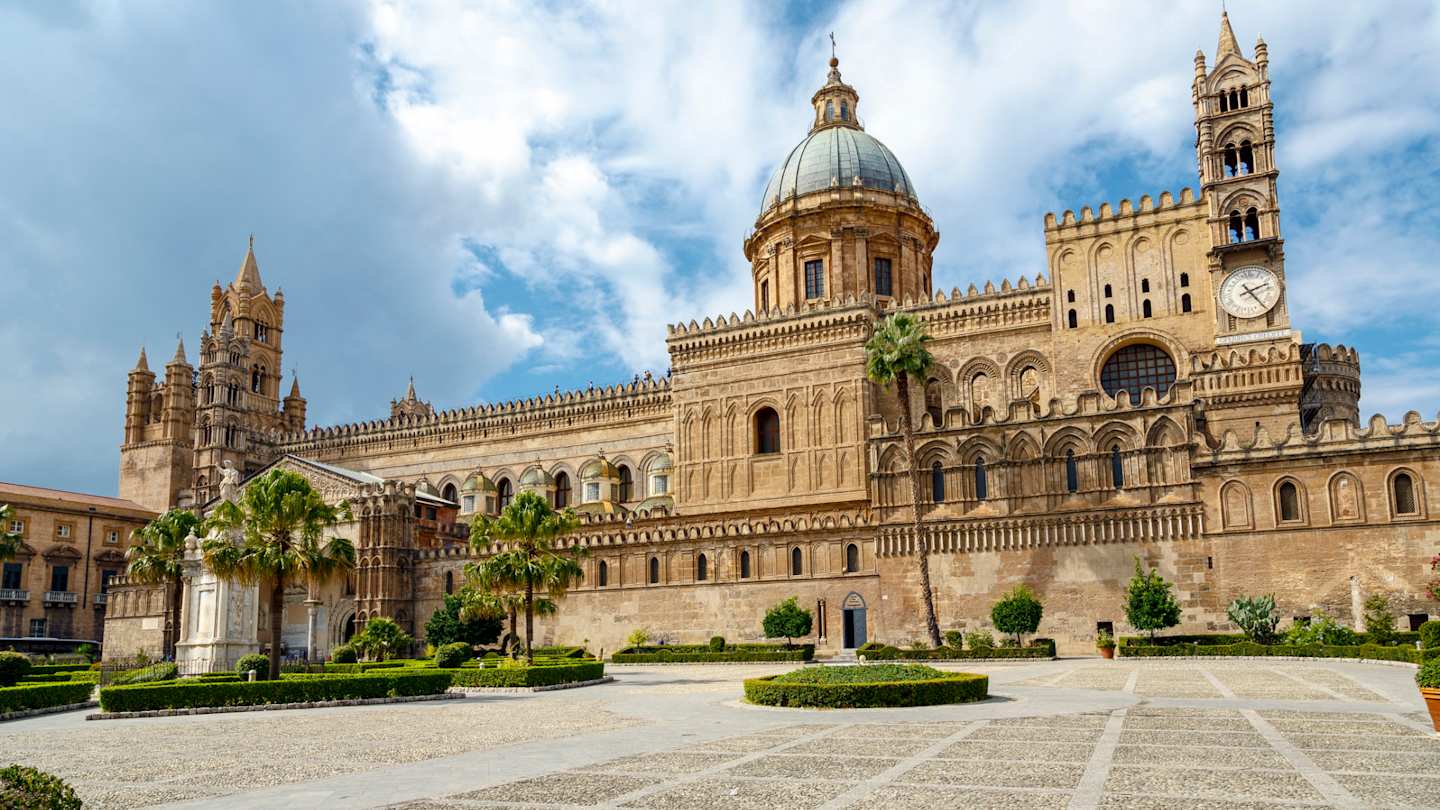
Sicily is the largest island in the Mediterranean Sea and one of Italy's most popular regions. It is renowned for its epic history, stunning natural beauty and rich culture (including delicious wine and cuisine). Unsurprisingly, it's a must-do on any Mediterranean or Italian bucket list. The longer you can spend in Sicily, the better, we say here at Plum Guide. In fact, if you have two weeks, we have just the itinerary for you. Our experts have spent plenty of time (perhaps a little too much) on this dream island and know everything there is to know about where to stay, what to do and where to eat and drink. Pack your bags and read on for the essential two-week itinerary to Sicily.
Days One & Two: Discover Palermo
Palermo is the capital city of Sicily, inhabited since ancient times and influenced by several cultures, including Greeks, Romans, Arabs and Normans. This has greatly influenced the rich history and cultural heritage on offer, as well as the vibrant street life with markets, fresh food and plenty of bars and restaurants.
Day one
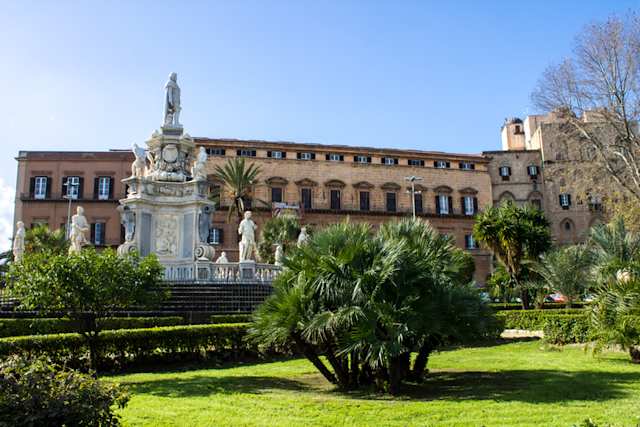
The Norman Palace in Palermo, Sicily
Begin your two-week itinerary to Sicily enjoying impressive Palermo landmarks such as the 12th-century cathedral, the Norman Palace and the accompanying Cappella Palatina. Plenty of other wonderful buildings are woven into the tapestry of narrow, winding streets that make up this fascinating city. For example, make the most of being in Italy with a trip to the Massimo Theater, the largest opera house in Italy. Considered one of the finest examples of neo-classical architecture in Italy and a UNESCO World Heritage Site, it makes for an unforgettable evening.
Day two
Bustling street markets are a must-visit in Palermo. Ballarò is one of the oldest and most vibrant thanks to colourful stalls and a lively atmosphere. Located in the heart of Palermo, it covers several blocks of narrow streets and alleys with a wide variety of products, including fresh produce, spices, meats, seafood, clothing and crafts. Next, take a short 20-minute drive out to the Cattedrale di Monreale. Another UNESCO World Heritage Site, this medieval treasure is Italy's oldest church, with some of the ornate mosaics dating back to the 12th and 13th centuries.
Days Three and Four: Sail to the Aeolian Islands
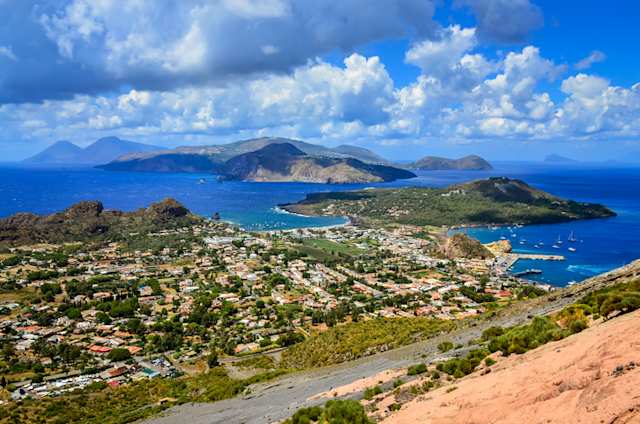
View of the Aeolian Islands
Named after the Greek God of the winds, Aeolus, the Aeolian islands sit just off the coast of Sicily. A volcanic archipelago, you'll find a fascinating variety of natural landscapes, charming villages (with plenty of culture) and epic views. Thanks to their location, the beaches and sea are particularly well suited for swimming, and the fresh seafood is divine. We recommend two days here to really get the most out of it. There are plenty of yachts and boats for hire from mainland Sicily.
Day Five: Find postcard perfection in Cefalù
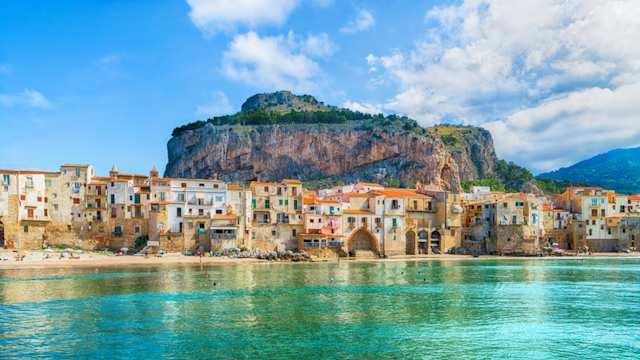
The coastal city of Cefalù
This pretty little seaside town looks and feels like you're in a Sicilian postcard. Hike 268 metres up La Rocca, a huge hulk of rock offering stunning views over the town and coastline. Alternatively, take it easy, meandering around the old harbour and quaint streets in search of a Negroni (try Neo Mediterraneo Vibes bar) and gelato (L'Angolo Delle Dolcezze Pasticceria Gelateria). If you can muster the energy, the beach isn't half bad, either. Relax on a sun lounger and bathe in the crystal-clear blue waters of the Mediterranean. This is why you came to Sicily.
Day Six: See more small-town glory in Taormina
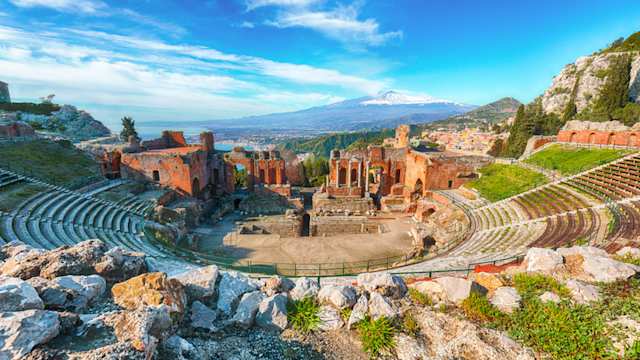
Ancient Greek theatre in Taormina, Sicily
Continue the R&R in lovely Taormina. Nestled on a hill overlooking the Ionian Sea and nearby Mount Etna, it's a popular destination among tourists and locals. Explore its charming streets filled with boutiques and al fresco cafes, marvel at the spectacular views from the many terraces and get inspired by the ancient Greek-Roman theatre, originally built in the 3rd century. Throughout the summer in Taormina, you'll find plenty of events, including dramas, concerts, symphonies, operas, ballet performances and music festivals.
Day Seven: Swim around a beautiful island? Yes please
Take the cable car down from Taormina to the beaches below. Spiaggia Di Mazzeo is the most popular, well-equipped with sun loungers, umbrellas, showers and bars aplenty. Next, hop over to Isola Bella (beautiful island) off the coast. Known for superb beaches and crystal-clear waters, it offers incredible views of the coast and Mount Etna with plenty of swimming, sunbathing and snorkelling. An added nature reserve with rare flora and fauna, as well as an 18th-century villa (now a museum), make it the perfect place to relax.
Day Eight: Hiking Mount Etna (yes, really)

Cable cars leading to the top of Mount Etna
Playing a key role in shaping Sicily and its inhabitants across the millennia, Mount Etna is the largest active volcano in Europe. It might come as a surprise to you to find out that you can hike to its summit. Passing through an other-worldly moonscape of ancient lava, craters and hot springs, the views at the top are, as you'd imagine, simply breathtaking. Now, we won't tell if you don't, but…there is also the option of a cable car and narrow-gauge railway that gets you up to the top of the mountain without breaking a sweat.
Day Nine: Wander around Catania
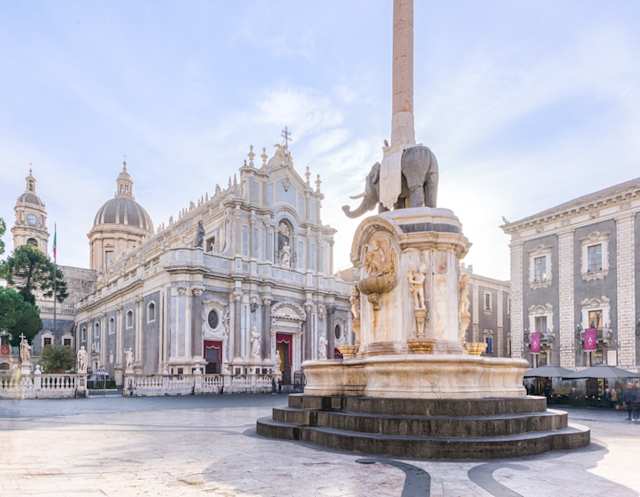
The main city square Piazza del Duomo in Catania
An ancient port city for millennia, Sicily's second largest city of Catania is home to numerous important historical and cultural attractions, including the Roman Amphitheater, the Ursino Castle, and the Piazza del Duomo, where you'll find the famous Cathedral of Sant'Agata. Sitting in the shadow of Mount Etna, it's been rebuilt multiple times, often using the same materials that destroyed it. As a result, cooled lava can be found everywhere, creating the unique 'Black Baroque of Catania' architectural style. For foodies, this is also the birthplace of pasta alla Norma and arancini rice balls. It doesn't get any better.
Day Ten: Explore Syracuse and the island of Ortigia
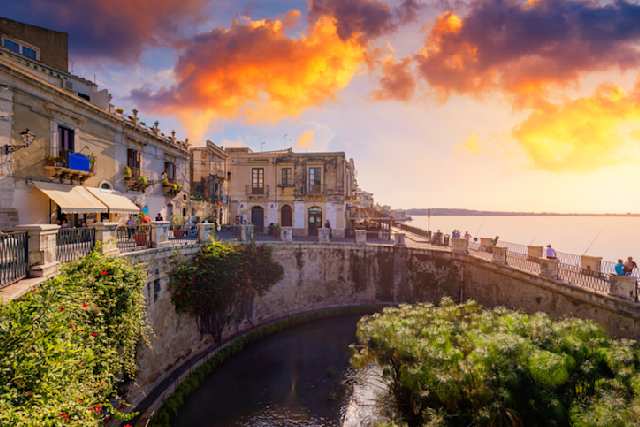
The Fountain of Arethusa in Syracuse
On the east coast of Sicily is Syracuse, a city with an ancient theatre dating back to the 5th century BC. The main historical centre, however, lies on the nearby island of Ortigia. Connected to the mainland by a bridge, it's easily accessible by car and public transport. Here, you'll find the Temple of Apollo, one of the oldest Greek temples in the world, and a majestic cathedral (built in the 7th century) that's well known for its Baroque architecture and Byzantine mosaics. The island is famous for delicious local cuisine, with a wide variety of dishes and specialities, such as the famous arancini and the granita iced dessert.
Days Eleven and Twelve: Unearth the wonders of Val di Noto
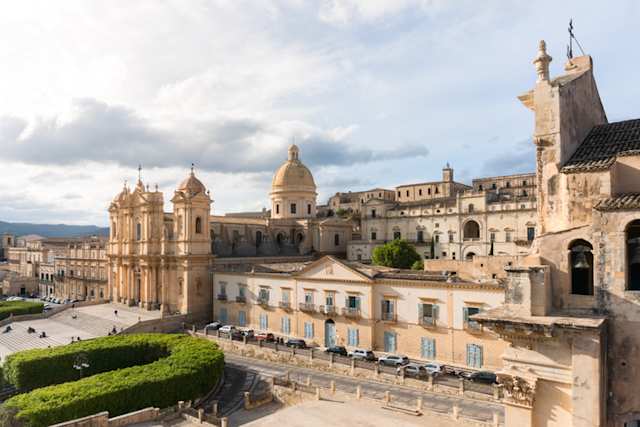
View of the Cathedral of Noto, Val di Noto, Sicily
No two-week itinerary to Sicily would be sufficient without ample time spent in Val di Noto. This is one of Sicily's best UNESCO World Heritage Sites—a valley known for its rich history, cultural heritage, scenic landscapes and picturesque towns. In each of these delightful towns, you can find several historical and cultural attractions worth your time and money, which is why we've allocated two days to the region overall.
Begin in Militello in Val Di Catania, just outside Catania. Surrounded by rolling hills, vineyards, and olive groves, it boasts some astounding architecture. Meanwhile, in nearby Caltagirone, you'll find splendid enamelled ceramics on practically every building in the old town—perfect for a souvenir or two (from the shops, not the buildings themselves).
For the best Baroque-style towns, explore Noto, Ragusa and Modica. Ragusa is home to Giardino Ibleo, a serene public garden, while Modica is well known for its chocolate (you have to eat the edible samples from the museum quickly before they melt). On the topic of a sweet tooth, nearby Palazzolo is famous for palazzolotti cookies. There is also a 3rd-century BC ancient theatre and the 16th-century Church of San Sebastiano (gorgeous frescoes here) if you need an excuse.
Day Thirteen: Delve into historical Agrigento
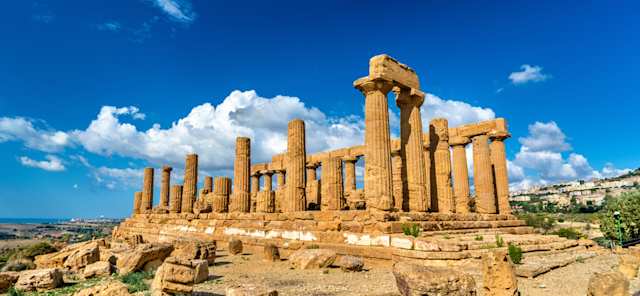
The Temple of Juno in the Valley of the Temples, Agrigento, Sicily
Agrigento is unmissable. Home to the Valley of the Temples (a UNESCO World Heritage Site), this is a must. Considered one of the most important archaeological sites in the world, there are several ancient temples, including the Temple of Hera, Concordia and Zeus, some of the best-preserved Greek temples in the world. In Agrigento itself, you'll find plenty more museums, trattorias, and bars to keep you going. Chef Fabio Gulotta's Terracotta restaurant comes particularly well recommended if you're looking to sample the freshest Sicilian seafood, pasta and tiramisu.
Day Fourteen: Live the slow life in Trapani
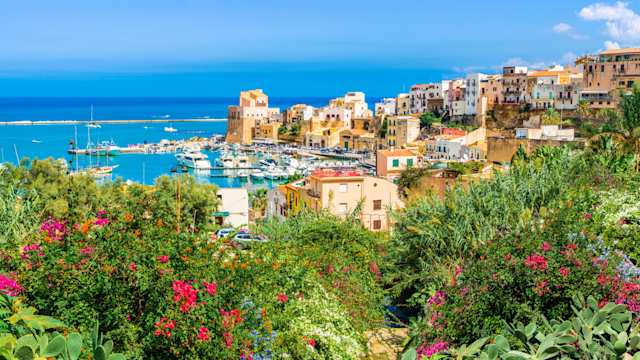
The town and municipality Castellammare del Golfo in the Trapani Province of Sicily
Situated on the west coast of Sicily, Trapani is popular for its charming streets, delightful beaches and rich cultural heritage. Classic Sicily, right? Of particular interest is the Basilica-Sanctuary of Maria Santissima Annunziata, which was built in the 14th century and is known for its dazzling frescoes, and the Palazzo Senatorio, which houses the city's art museum and displays a collection of important artworks and artefacts. There's also some delicious local cuisine to sample, with a wide variety of fresh dishes and specialities such as couscous and seafood.
